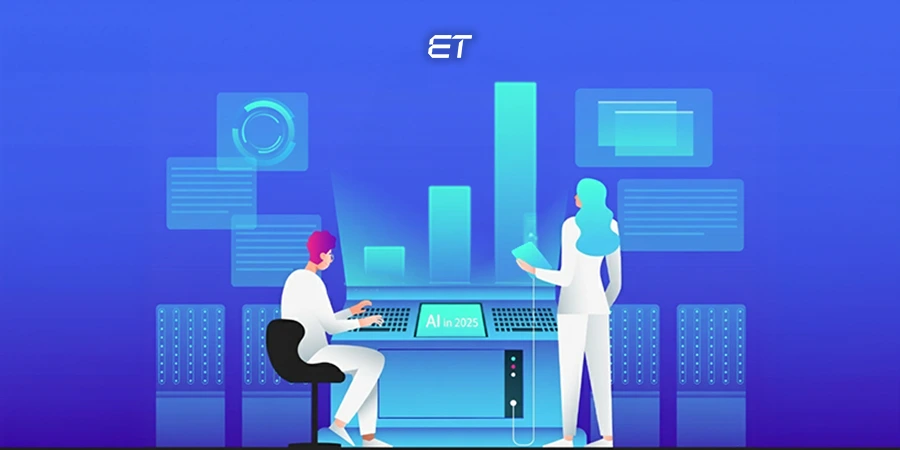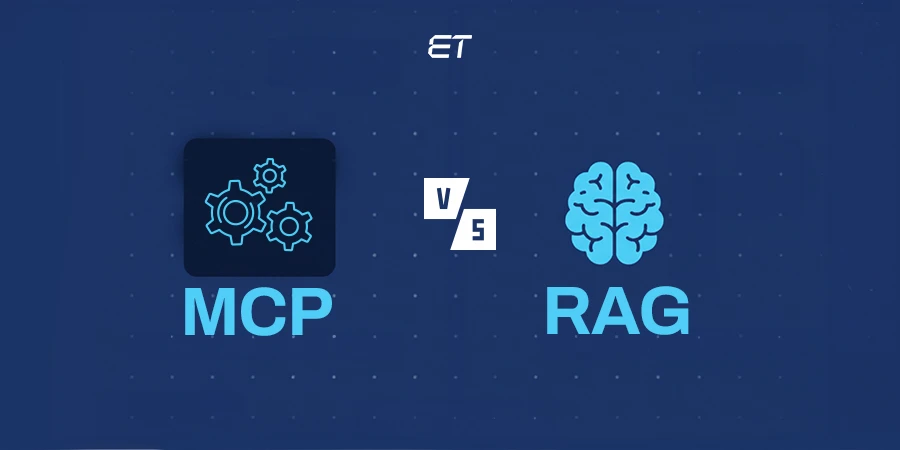
AI Adoption Statistics in 2025 – How Enterprises Are Moving From Experimentation to Transformation
If there is one thing 2025 has made clear to the global business community, it is that artificial intelligence is no longer a “future opportunity” or a “strategic experiment.” It is now a core component of how modern enterprises operate, compete, innovate, and scale.
Over the last 18 months, the pace of AI adoption has accelerated more sharply than any technology shift in the last two decades, which includes cloud computing, mobile transformation, and cybersecurity evolution.
Every leadership meeting, regardless of industry, now includes discussions on AI readiness, AI governance, workforce upskilling, operating model redesign, and value realization.
The conversations have shifted from “Should we adopt AI?” to “How fast can we integrate it into every function without disrupting workflows or exposing the organization to risk?”
This shift has been driven not by hype or speculation, but by data. AI adoption in 2025 has reached record levels, crossing even the most forecasts made during the early wave of generative AI enthusiasm in 2023 and 2024.
Yet, the numbers also paint a more complex narrative that adoption is high, usage is widespread, but true enterprise-scale maturity remains elusive for many.
What follows is a detailed exploration of the statistics shaping AI adoption in 2025, what they reveal about the enterprise landscape, and how organizations must respond to capture sustainable long-term value.
Understanding The Global AI Adoption Landscape

In 2025, global AI adoption reached an unprecedented inflection point. Multiple industry studies conducted in early 2025 indicate that 88% of enterprises worldwide have adopted AI in at least one critical business function. This is more than a trend; it marks the normalization of AI as an integral part of the modern business landscape.
Key industry reports released in 2025 highlight just how deeply AI is now embedded in business operations:
- McKinsey’s “State of AI 2025” reveals that 23% of enterprises are already scaling agentic AI systems, with another 39% actively experimenting with AI agents, indicating a significant shift toward autonomous, multi-step workflow automation.
- ISG’s 2025 Enterprise AI Adoption Report reveals that 31% of prioritized AI use cases are now in full production, nearly double the 2024 figure, showing accelerating maturity.
- Knowledge Wharton’s 2025 AI Adoption Report finds that 82% of enterprises use Generative AI on a weekly basis, with 46% relying on it daily, underscoring how GenAI has become a core productivity tool.
- According to Second Talent’s aggregated enterprise data, AI-driven organizations now invest US $6.5 million annually on advanced AI systems, while 73% cite data quality as their biggest scaling challenge.
Together, these statistics make one thing clear: while AI adoption is now nearly universal, enterprises are at different levels of readiness.
Some are scaling agentic systems, while others are still overcoming foundational barriers, such as data quality and governance. But the momentum is unmistakable, and AI has become a central pillar of the 2025 enterprise operating model.
Curious how generative AI is cutting software development time in half? Here’s what CTOs are prioritizing in 2025.
Generative AI Explodes Across the Enterprise

No element of AI has grown faster than generative AI. At the start of 2023, generative AI tools were viewed as novelty assistants. By 2024, they had become valuable productivity boosters. In 2025, they have become essential infrastructure.
The statistics highlight this transformation clearly:
- 82% of enterprises now use generative AI weekly.
- 46% report daily enterprise use of GenAI tools.
- 72% actively measure the ROI of generative AI applications.
- 91% of knowledge workers rely on at least one GenAI tool.
Generative AI is no longer viewed solely as a tool for creative tasks. It is being used for drafting technical documentation, analyzing operational data, producing compliance reports, and summarizing legal content.
It has become the foundational layer for information processing and decision intelligence.
Employees increasingly describe generative AI as a “digital colleague,” a resource that simplifies complex tasks, accelerates research workflows, and reduces time spent on repetitive activities.
The velocity of this adoption is unlike anything enterprises have experienced before, even during the cloud revolution.
AI Adoption as a Budget Priority – Investment Reaches New Highs

AI is no longer receiving leftover innovation budgets. It has become a top-tier investment category.
In 2025, large enterprises are spending an average of $6.5 million per year on AI programs, with some industries, particularly financial services, healthcare, and retail, doubling this investment within their transformation roadmaps.
In fact, 92% of global enterprises increased their AI spending compared to 2024, and 43% increased their budgets by more than 25%. This is not an accidental rise. It reflects a belief that AI will be responsible for the next significant leap in enterprise productivity, competitiveness, and operational resilience.
More importantly, this spending is no longer fragmented across dozens of experimental pilot projects. Leaders have learned from early-stage mistakes and are now investing in:
- AI governance frameworks
- AI model-ops and monitoring systems
- Data modernization
- Workforce upskilling
- Enterprise-wide platforms instead of department-level tools
- Long-term AI roadmaps instead of short-term trials
Investments have matured because enterprises have realized that scaling AI requires a solid foundation, rather than scattered tools with no common architecture.
Confused about which AI type your enterprise really needs? Let our experts map the right intelligence to your business goals.
The Value Realization Gap: AI Adoption Is High, Impact Is Uneven

Despite record-breaking adoption and investment, there is a shocking statistic that dominates every enterprise AI discussion in 2025:
- Only 31% of enterprises report a measurable financial impact from their AI initiatives.
Even more striking is this:
- Only 6% say AI has contributed more than 5% to their earnings.
This gap between adoption and impact is now commonly referred to as the AI Value Realization Challenge.
Why does it exist?
Enterprises enthusiastically launched pilot programs in 2023 and 2024; however, many were not prepared for the complexities of scaling AI across departments, geographies, regulatory environments, and existing legacy systems.
What works seamlessly in a controlled environment often breaks when exposed to real-world data, governance constraints, and operational nuances.
The result is that many organizations are using AI widely, but inconsistently and without the integrated systems needed to produce enterprise-level outcomes. Adoption has happened; transformation has not. And 2025 is the year enterprises are forced to confront this gap.
What Prevents Enterprises From Scaling AI Successfully

1. Data Quality and Readiness Issues
The single largest blocker to enterprise AI success remains data. 73% of enterprises cite poor data quality as their number one obstacle.
Enterprises that raced into AI pilots without addressing foundational data challenges are now experiencing:
- Inconsistent model outputs
- Drift and bias issues
- Integration difficulties
- Compliance and audit concerns
- Slower deployment cycles
AI cannot exceed the quality of the data it is fed, and enterprises are learning this lesson urgently in 2025.
2. Lack of AI Governance and Operating Models
Only 43 percent of surveyed organizations have an AI governance policy, including policies for:
- Model validation
- Transparency
- Responsible AI usage
- Risk scoring
- Compliance monitoring
- Ethical guidelines
Without governance, AI remains trapped in a pilot phase and cannot scale safely.
3. Workforce Skills and Cultural Readiness
Although employees use AI daily, only 38% feel confident in their ability to use it effectively or responsibly. This creates fear, misuse, and resistance, ultimately slowing transformation.
Enterprises are now investing heavily in AI literacy, role redesign, and change management programs to ensure their workforce evolves along with their AI systems.
Industry-Wise Adoption Patterns: Who’s Leading in 2025?

Different industries have adopted AI at different rates. In 2025, the leaders are:
Financial Services – 91% Adoption
Banks and insurers rely heavily on AI for fraud detection, risk assessment, credit scoring, regulatory reporting, investment analytics, and claims processing.
Healthcare – 84% Adoption
Hospitals and health-tech companies utilize AI for diagnostic support, patient triage, medical documentation, billing, and clinical decision-making assistance.
Retail & E-commerce – 81% Adoption
Personalized recommendations, dynamic pricing, operational forecasting, and customer support automation drive AI growth in retail.
Manufacturing – 78% Adoption
Manufacturers deploy AI for predictive maintenance, process automation, quality inspection, supply chain planning, and production optimization.
These industries illustrate how AI adoption is closely tied to operational complexity, regulatory requirements, and customer expectations.
The Workforce: AI as the New Co-Pilot for Employees

One of the most profound shifts of 2025 is the normalization of AI as a workplace assistant. 91% of knowledge workers now use AI tools daily or weekly, often describing them as “second brains” that shorten research time, accelerate documentation, and improve decision quality.
Employees are no longer fearful of AI replacing them. Instead, there is growing acceptance that AI amplifies human capability. Jobs are not being eliminated but redefined, with AI handling repetitive tasks while humans focus on strategy, creativity, relationship building, and judgment-intensive work.
The Strategic Shift From AI Adoption to Integration

The most mature enterprises in 2025 understand that AI transformation is not about introducing tools; it is about redesigning the operating model around AI. This means integrating AI into every workflow, aligning data strategies with business strategies, upskilling teams, and establishing governance to ensure reliability and compliance.
Enterprises achieving the highest ROI share common behaviors:
- They embed AI into cross-functional workflows, not isolated departments.
- They redesign processes entirely rather than layering AI on top of outdated systems.
- They invest in AI governance as rigorously as they do in cybersecurity.
- They treat AI as an enterprise-wide capability, not a collection of tools.
- They empower employees to work hand-in-hand with machine intelligence.
These organizations are demonstrating that AI maturity is not defined by how much AI you use, but by how intelligently and systematically you integrate it.
2025 as the Turning Point for Intelligent Enterprise Transformation

As this shift accelerates, one insight becomes impossible to ignore: enterprises can no longer rely on generic tools or fragmented experimentation.
They require AI solutions that are specifically designed, engineered, and integrated to accommodate their unique data, processes, and industry-specific constraints. This is where AI software development services emerge as a strategic enabler.
From building custom models and intelligent automation workflows to designing scalable architectures, strengthening data pipelines, and ensuring responsible governance, AI development partners help organizations go beyond adoption and achieve true operational transformation.
2025 is not simply “another year of AI growth.” It is the year AI becomes a defining pillar of the modern enterprise. The winners will be those who use the statistics not as a scoreboard, but as a roadmap, one that guides them from adoption to true intelligence-driven transformation.
Closing the gap between AI adoption and measurable impact starts with the right partner. Let’s discuss your transformation roadmap.





